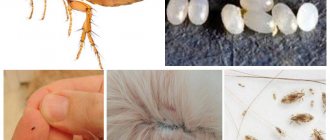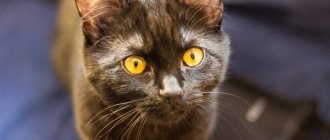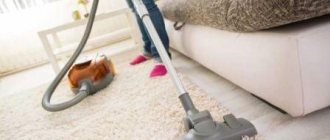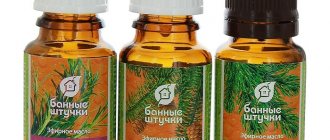The small medallion is very convenient to use. Parasites always evoke one desire - to get rid of them as quickly as possible, once and for all. But at the same time, you don’t want to poison your body with poisons – of course, not the parasite, but your own or your beloved pets. The search for a harmless remedy has always been going on - it is no coincidence that everyone loves to experiment with wormwood, tansy leaves, garlic and orange peels. Convinced that folk remedies work rather poorly, humanity turned its attention to modern scientific technologies. And they used heavy artillery - ultrasound. Curious, do ultrasonic products actually repel fleas or is it just marketing?
Properties of Ultrasound
Ultrasound has long been of interest to humanity from the point of view of its impact on living organisms. Since the discovery of ultrasonic waves, scientists have noticed that it affects living beings, although it is not felt by their senses.
Ultrasonic vibrations of a certain frequency and strength can kill very quickly various protozoa and microbes. Experiments have shown that even small fish die from exposure to ultrasonic waves.
Ultrasound - sound waves having a frequency higher than what is perceived by the human ear, usually ultrasound means frequencies above 20,000 Hertz
Ultrasound also works on large creatures. Of course, a person or animal will not die from it right away. But his health can deteriorate significantly with prolonged exposure to high-frequency waves. Outwardly, for no apparent reason, they develop headaches, apathy or irritability, depression, panic, sleep disorders, fatigue, drowsiness, and dizziness.
Under the influence of ultrasonic waves, many vital processes in the body slow down. The negative effect of ultrasound on living beings is also due to the fact that at a certain frequency it causes the formation of cavities in tissues, which leads to their death.
It is not surprising that there is a desire to use ultrasound to combat various parasites, in particular fleas, cockroaches, and ants.
What insects and animals can be used against?
The ability of ultrasound to influence certain types of living organisms was proven more than thirty years ago. The effectiveness of directed high-frequency vibrations against bacteria has already been studied, which has made it possible to use ultrasonic types of emitters in medical practice.
The tests and trials of ultrasonic devices for repelling insects do not allow us to confidently confirm their high efficiency. As practice shows, such devices have little effect on insects. In any case, if you want to use ultrasonic devices to expel pests from your living space, you should give preference to certified products from trusted manufacturers.
Effect
Ultrasound has been used in a variety of home and pet devices to repel animals. At the same time, the ultrasound repellers currently produced do not emit strong ultrasound, so that the device does not turn into a destroyer for large animals and humans. Today there is a repeller for various crawling insects in the house, from mice and moles, from mosquitoes and parasites, in particular, ticks and bedbugs.
Ultrasonic insect repeller in the apartment
The ultrasonic flea repeller is designed specifically to protect animals from unpleasant bloodsuckers, which greatly complicate their lives and can cause a number of dangerous diseases.
The intended effect is that the ultrasonic waves will affect the fleas, causing them discomfort and destroying their tissue. This will keep the fleas away from the animal.
Please note that ultrasound does not kill fleas. At least instantly or even within a few days. Its task is to prevent the flea from jumping on the animal, nothing more.
Reviews
I bought a repeller in the form of a collar for my shepherd. After switching on, the animal began to behave strangely. The dog whined and began to try to get rid of the device. I had to remove the collar. I don’t know if this would have the effect of “repelling” fleas, but pets definitely react poorly to such devices!
Sergey, Cheboksary.
After switching on, the small box began to make an unpleasant squeaking noise. Well, nothing, we got used to it after a couple of hours. After two days, the fleas became somewhat lethargic and could easily be caught with your hands. But they did not disappear completely. The device burned out after two weeks, so, unfortunately, it is impossible to know the final results of the experiment.
Margarita, Borisoglebsk.
He placed the device on the kitchen table and turned it on. There were no extraneous sounds, the equipment worked properly, and I did not feel unwell. But the fleas have not gone away - just as they bit the cat, they continue to do so. Maybe, of course, I came across a low-quality model or I configured the repeller incorrectly, but ultrasound had no effect on the parasites.
Andrey, Mytishchi.
What is
A modern flea repeller is a miniature medallion pendant that is hung from an animal's collar. It looks quite aesthetically pleasing.
Ultrasonic flea pendant
The device operates completely silently, so it does not cause any inconvenience to either the dog or its owners.
You may also be interested in the article about electronic devices for killing mosquitoes.
What fleas fear and dislike
Water is a flea repellent. Therefore, wet cleaning with repellents added to the water and washing pets help get rid of fleas. They cannot tolerate extreme increases and decreases in air temperature. They are afraid of strong odors of artificial and natural products. These can be: pine needles, wormwood, rosemary, soap. To combat fleas, the following are also used: salt, soda, boric acid, baby soap, onions.
Chemical smells
When figuring out what smell fleas don’t like, the obvious fact is the strong deterrent effect of artificial substances. These include the following available tools:
Bleach and whiteness
Products containing chlorine are very effective in fighting fleas. But when processing, safety precautions are required. Chlorine is a poisonous substance.
Attention! When inhaling vapors, very serious consequences occur. Processing of premises must be carried out using a respirator. The skin must be protected by protective clothing. After treatment, the room must be left for several hours.
Kerosene
Kerosene has been used as a deterrent since ancient times, despite the fact that it has an unpleasant, persistent and strong odor. This product has such disadvantages as persistent odor and flammability. To treat animals, it must be diluted with water.
Insecticides
Chemical insecticides are an effective way to kill fleas. The most effective insecticides are Karbofos, Doctor Klaus, Dichlorvos. They are designed for treating indoor and garden areas. The products are toxic and are not used to remove insects from animal fur. Such preparations as Butox 50, Raptor, Clean House, Raid, Combat are effective in destroying blood-sucking insects. The products are available in the form of sprays, aerosols and liquids.
Spray Raptor
Long-acting product with mint aroma. Properties are retained for 20 days. The toxic effect is based on a combination of chemicals: piperonyl butoxide, tetramethrin, cypermethrin. After a single treatment, the larvae die. Before using the aerosol, you must thoroughly wash the floors, wash clothes and pet rugs.
Strong drugs against pests are: Geletrin, Cyfluthrin, Oradelt. Chlorpyrimac is an effective remedy against fleas and other domestic insects. The drug is applied to the surface. After a few hours, wet cleaning is carried out. According to user reviews, all insects die.
Products based on pyrethrins and pyrethroids are effective and have low toxicity for animals. These insecticides include the following drugs:
- Insecticide.
- FAS.
- Medilis-Ziper.
Special drops help get rid of fleas on pets:
- Dana Ultra Neo.
- Celandine.
- Barrier.
- Blokhnet.
Pros of the device
Why is ultrasonic repeller becoming increasingly popular among pet owners? The thing is that it combines properties that a person considers ideal:
- does not require personal participation in the struggle process;
- does not require maintenance.
This is a “set it and forget it” product that literally everyone, without exception, likes.
Ultrasonic collar against ticks and fleas
Pros of the device:
- there is no need to configure the device;
- no additional treatment of the animal is necessary;
- does not contain poisons, therefore theoretically absolutely safe and harmless;
- can be used in homes with small children;
- easy to use;
- does not require maintenance;
- lasts a long time;
- suitable for sick and pregnant animals;
- no need to charge from the network.
In addition, manufacturers claim that the device simultaneously fights ticks, which only increases its attractiveness.
How to process
Treatment of residential premises against pests must be carried out in compliance with certain rules. The first stage is general cleaning of the area. This is necessary to thoroughly prepare all surfaces in the room for the upcoming treatment. In the process, it is already possible to get rid of some of the parasites. This is followed by the treatment itself using insecticides or an ultrasound-based repeller.
It is important to thoroughly treat all areas where bloodsuckers can live. They especially love textiles, floor surfaces, baseboards, corners, and upholstered furniture. The next day it is necessary to treat all surfaces again. This is necessary, since it makes it possible to remove the remnants of the drug used, as well as the corpses of pests. When another week has passed, it is advised to treat all areas again with the chosen product. Then we can talk about the complete elimination of parasites.
Flaws
Does the device have any disadvantages? I would like to believe that it is not. But we all understand perfectly well that there are no ideal things.
There are many restrictions here:
- You cannot bathe an animal in the device;
- the device cannot be removed, you must walk in it constantly;
- The action begins, according to manufacturers, after 2-4 weeks.
The last one is the biggest drawback. If the device begins to operate only after such a long time, then the animal is left without protection from fleas. Accordingly, the use of other means is required - drops, suspensions, flea collars. These are additional expenses that the dog owner was trying to avoid.
Under the influence of ultrasound, the animal may become lethargic
From a health point of view, everything is also ambiguous. Some animals under the influence of ultrasound begin to behave restlessly or, on the contrary, become apathetic and stop playing. If we remember that prolonged exposure to ultrasound is detrimental to a living organism, then the recommendation to wear it without removing it begins to worry dog owners.
And the last drawback is the cost. A flea device with ultrasound is much more expensive than drops.
Ultrasonic flea repeller (video)
What methods are used to repel fleas?
To repel pests, various means are used that affect different sensory organs of the insect. Experienced fighters against bloodsuckers claim that annoying parasites can be scared away with the help of:
- smell;
- temperature;
- sound;
- air vibrations.
Exposure to odors
Considering the fact that the problem of the appearance of blood-sucking fleas is more relevant for rural areas, where pets walk on their own.
The most popular methods of repelling them are folk remedies, because fleas do not like certain smells. The owners use various plants, planting them on their plots and then laying them out in the house.
But this method is effective for preventing the appearance of parasites in the home, but does not protect dogs and cats that often walk outside.
Also, to prevent the reappearance of bloodsuckers in the apartment, you can treat hard-to-reach places with various sprays.
They contain insecticidal substances with a pungent odor that warn pesky insects that they are not welcome in the house.
Pests will never settle in a home treated with Dichlorvos or Karbofos, because fleas do not like their smell. But you cannot treat your pets with these sprays; they are very toxic for them.
To prevent bloodsuckers from attacking dogs and cats, there are special methods of protection. The most popular of them are odorous drops that are applied to the animal’s fur and skin, as well as collars for constant wear. The material from which the anti-flea collar is made is impregnated with synthetic odorants and essential oils that repel blood-sucking insects.
In principle, the mechanism of action of these two products is based on a pungent odor, so drops from collars differ only in cost and exposure time. Reviews from pet owners indicate the high effectiveness of anti-flea drugs and accessories.
But there are some restrictions and useful advice from professionals that must be followed when using:
- The products must be tested: before the first use, drops should be dripped in small quantities and observed how the cat or dog reacts to this.
- The anti-flea collar will have to be changed frequently. For different manufacturers, the service life of the accessory varies from 2 to 7 months.
- It is better to remove the collars when washing the animal, and the drops must be reapplied after each water procedure.
Exposure to temperature, light, moisture
Like any living organism, fleas have optimal temperatures for their existence and activity. There are also boundaries beyond which pests cannot live.
All parasites of this order (with the exception of Antarctic fleas) cannot tolerate negative temperatures. Too hot an environment (from 45 degrees) is also detrimental for them, especially with low humidity levels it leads to the death of bloodsuckers.
Therefore, in country houses during the cold period, you can arrange through ventilation, and then thoroughly heat the stove.
What else are fleas afraid of? These pesky pests are known to dislike sunlight. They try to hide in dark corners where the rays of the sun would not irritate their eyes. But they take the increase in humidity calmly, but try to avoid direct contact with water. Therefore, to rid a pet of parasites, it is recommended to wash it more often.
Exposure to sounds
Nowadays, ultrasonic repellers are becoming very popular in the fight against various pests. Manufacturers claim that high-frequency waves can repel rodents, insects and spiders from their homes. And if the devices have proven their effectiveness in the fight against mice and rats, then ultrasound does not help at all against fleas, and there is an absolutely logical reason for this.
The fact is that sound waves act on animals that have hearing organs. Therefore, the effect of repellers against rodents is quite logical. With insects, everything is more complicated, since not all of them have a hearing organ.
Those insects that can hear are those that themselves are capable of making sounds using cunning mechanisms. For example, grasshoppers and cicadas live in fairly dispersed populations and make a distinctive chirping sound to find a mate during mating.
Fleas, living in small, dense populations, do not need this ability; they do not have hearing organs.
And how can ultrasonic devices affect a bloodsucker who can’t hear anything? The answer is obvious - no way. Manufacturers have come up with not only devices that plug into an outlet, but also are powered by batteries.
It has come to the point that ultrasonic pendants have been invented that hang on a pet’s collar.
Sometimes these pendants receive positive reviews from dog owners, but you need to keep in mind that they are most often used in combination with anti-flea tape or drops.
Thus, repellers that emit only ultrasound are useless in the fight against fleas.
Efficiency
Judging by the reviews, the effectiveness of the device is quite doubtful.
The effect of wearing a medallion is noted - dog owners notice that fleas do not appear. However, almost everyone simultaneously uses flea drops and anti-flea shampoos for bathing their pets. In this case, it is quite possible to assume that the effect did not occur due to wearing the medallion, but due to the use of insecticides, because the drops always reliably protect pets from fleas and ticks.
The effectiveness of repellers has not yet been proven
Likewise, the cumulative effect of exposure to ultrasound is unclear. If ultrasound repels fleas, then the effect in this case, logically, should occur immediately, and not after a few weeks.
The effectiveness of repellers has not really been proven, since pet owners use a combination of products to combat fleas. However, there is no evidence that the device does not work at all. Therefore, it can be used in conjunction with other methods of control or as an independent remedy after the fleas have been removed using chemicals.
Popular models
Ultrasonic repellers from Russian and Chinese manufacturers are presented on the Russian market. Domestic models have large dimensions, high power and are used permanently. Foreign-made products are portable, low-power and do not have a large number of settings.
Common brands:
- Hail. A series of Russian professional devices that create a repellent background against fleas over an area of 400 to 2000 square meters, depending on the specific model. They have a circular radiation pattern, an extended range of operating ultrasonic frequencies up to 70 kilohertz, and sound pressure up to 110 decibels. Separate modes allow you to use Hail against different types of insects and rodents;
- Pest Reject. A series of Chinese household universal ectoparasite repellers. Available in stationary and portable models. The former create a repellent effect in rooms up to 200 square meters. The latter are attached to the collars of pets and repel fleas, ticks, and lice on the street (range of action up to 2 meters);
- Typhoon . Budget line of devices from a Russian manufacturer. Presented in 5 basic models for home use with connection to a household power supply.
Folk remedies
Many available remedies have proven effective in the fight against fleas - house, basement, cat and dog.
Ammonia
Ammonia for fleas.
An aqueous solution of ammonium hydroxide has a sharp, specific odor that is toxic to blood-sucking insects. The “aroma” of ammonia has a repellent effect on fleas, and the pests die from direct contact with the liquid. To treat floors, walls, furniture and other surfaces where insects can live, you will need an aqueous solution of 10 liters of water and 20 ml of ammonia (you can pour the product undiluted into cracks and behind baseboards). To avoid poisoning by ammonia vapors, after treatment you need to open the windows wide and leave the apartment for several hours.
Kerosene
Direct contact with kerosene causes the death of parasites, and even the specific smell of this chemical is dangerous for them. To get rid of pests, just rub the fur of an infected pet with kerosene or wash the surfaces in the room where fleas have infested, leave for 1 hour, and then rinse with water. When using a flammable mixture, you must follow fire safety rules (do not smoke, do not light gas burners, etc.).
Vinegar
Table vinegar (9%) not diluted in water causes the death of blood-sucking insects. With a vinegar solution, you can wash floors and household items, clean furniture and carpets, wash curtains and clothes. The vapors of the product are safe for humans and pets, but when working with it, you need to take care of your eyes and areas of the body with delicate skin.
Tar soap and boric acid
Birch tar, the main component of tar soap, is a natural flea repellent. Insects will not be able to return to surfaces treated with soap until the smell disappears. They can be used to wash pet bedding and rugs, and wash cats and dogs with medium and long hair. This product is not suitable for animals with short hair or hairless - it dries out the skin, causes dandruff and painful itching.
Natural repellent.
Salt
Contact with table salt crystals is harmful to fleas. To destroy a colony of parasites that has taken a liking to a woolen carpet or synthetic rug, just rub the product into the floor covering and leave for 2-6 hours. The effect of salt can be enhanced several times if you mix it in equal proportions with baking soda. When the holding time is over, the owners need to vacuum the product or take it outside and knock it out with a cracker.
Essential oil
Essential oils of walnut, anise, tea tree, clove, peppermint, lemon balm, thyme, lavender, juniper and other coniferous crops are suitable for fighting insects. To treat a home, you need to add 20 drops of ether to 10 liters of water, pour the resulting solution into a spray bottle, treat the room and the things in it (furniture, carpets). To prevent infection of a cat or dog, it is recommended to apply 2-3 drops of an aromatic substance to the animal’s withers.
The repellent effect of essential oils can last as long as there is a rich smell in the air. As soon as the concentration of the ether decreases, the product must be reapplied.
Herbs
It is recommended to hang or place fresh bunches of herbs or tree branches, which have strong specific odors, in the corners of the apartment, near the pet’s bedding, or in the barn. When they wilt, they need to be replaced with a new, freshly picked plant. An infected cat or dog can be bathed in a decoction of wormwood.
Wormwood for fleas.
What should you consider when choosing?
When choosing a product, you should pay attention to some of its parameters:
- Device power. To combat insects, a battery-powered device is sufficient. If we are talking about rodents, much more energy is required. These are the mechanisms included in the network.
- Temperature environment. Each product is designed for specific weather conditions. Any repeller will work in the apartment. If you need a product for the street, you should choose the appropriate models. Some manufacturers have devices made to operate at sub-zero temperatures.
- Coverage area. The characteristics of each device indicate the area with which it operates. This refers to an empty room. If there is a lot of furniture in the room, efficiency drops sharply.
- Power supply. For this purpose, the following are used: batteries, electrical network, accumulator, solar energy. Some models have a combined power supply system. The parameter is important if the device will be used outdoors. If the device is used at home, it is more convenient to use electricity.
Sources
- https://nzs-rst.ru/klopy/ultrazvuk-ot-bloh.html
- https://hlopklop.com/blohi/ultrazvukovoj-otpugivatel-bloh.html
- https://stop-klopam.ru/blohi/otpugivateli-bloh-mif-ili-realnost
- https://kopejsk.ru/obrabotka/ultrazvukovoj-otpugivatel-bloh-dlya-doma-otzyvy-i-opisanie.html
- https://GdeKlop.ru/blohi/kakoj-zapah-otpugivaet/
- https://lifeinsect.ru/chto-otpugivaet-bloh.html
[collapse]
Plant world versus pest
Various herbs have proven effectiveness in the fight against small bloodsuckers. The principle of operation of this method is based on the fact that fleas do not like strong plant smells. To get rid of fleas, you need to place a plant around the perimeter of the room. It should be changed immediately after drying. Freshly picked herbs have a much stronger aroma. To help your pet get rid of fleas, you need to tie a small branch with one of the recommended plants to his collar. Plants for fleas What grass are fleas afraid of:
- wormwood - the sharp, specific smell of the plant is unpleasant even to humans, and for a flea, whose sense of smell is much more developed, it is simply unbearable;
- tansy is an unconditional option for scaring fleas away from humans; this plant with small yellow inflorescences has a sharp aroma mixed with bitterness;
- cloves for fleas have a concentrated aroma, the high content of esters in the plant prevents the reproduction of bloodsuckers, and also forces them to change their habitat;
- mint against fleas will not only help get rid of the insect, but also give the room pleasant fresh air;
- bay leaf - the plant does not lose its aromatic qualities even after drying; to get rid of annoying insects, you can spread laurel leaves under carpets, beds and corners of the room;
- citruses. Another remedy for answering the question of what smell fleas are afraid of, but humans love. A pleasant citrus aroma will fill the room with warmth and freshness. While a person enjoys the aroma, pests will begin to look for escape routes.
The following types of herbs help solve the problem with insects:
- eucalyptus;
- lavender;
- thyme;
- geranium.
Florists actively use many of the listed plants to create compositions. Therefore, spectacular ikebana will be an excellent prevention against the parasite in an apartment or house. Essential oils from these plants have an enhanced effect. Just one drop or a few, diluted in a small amount of water, turns into an excellent flea remedy.











